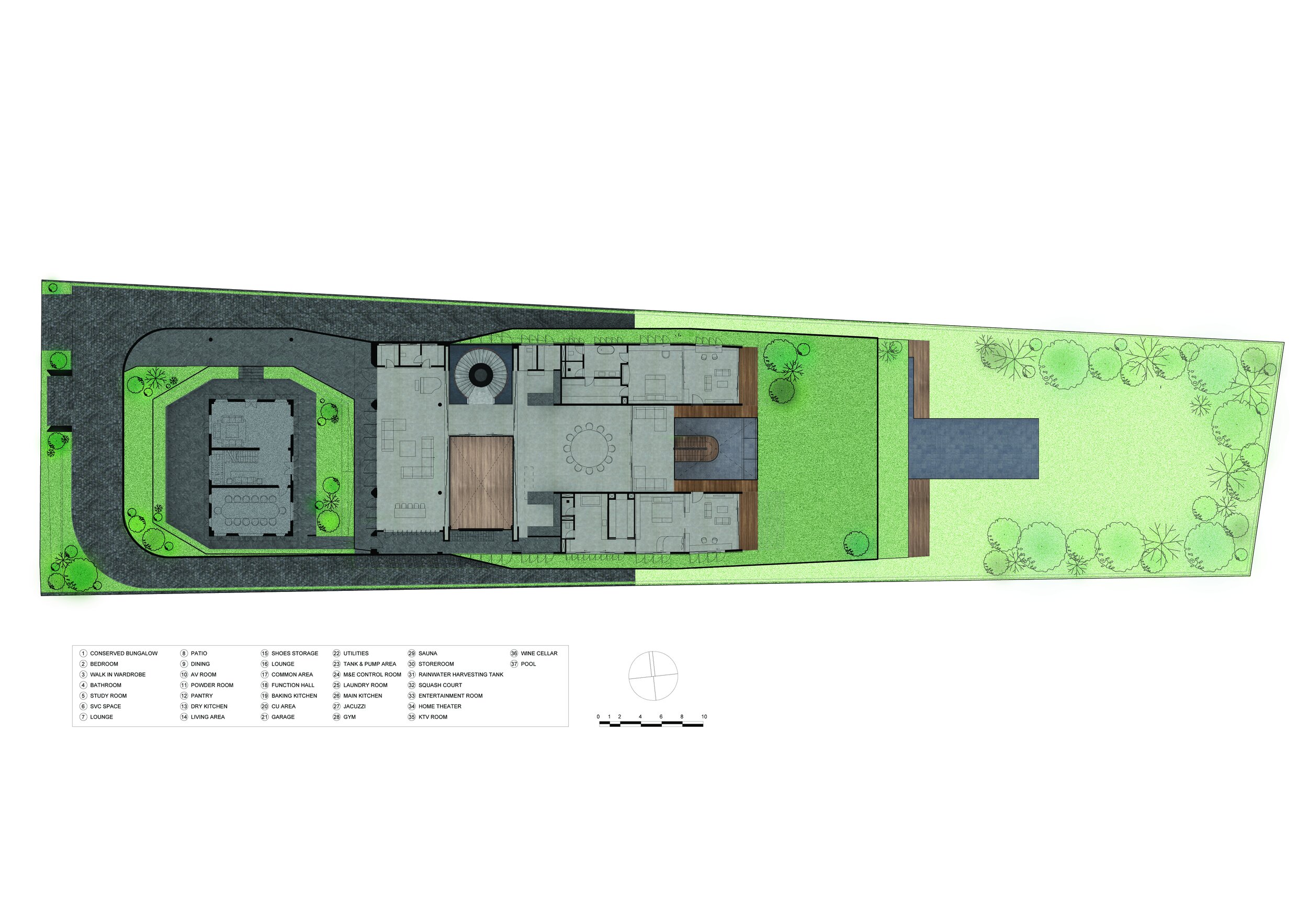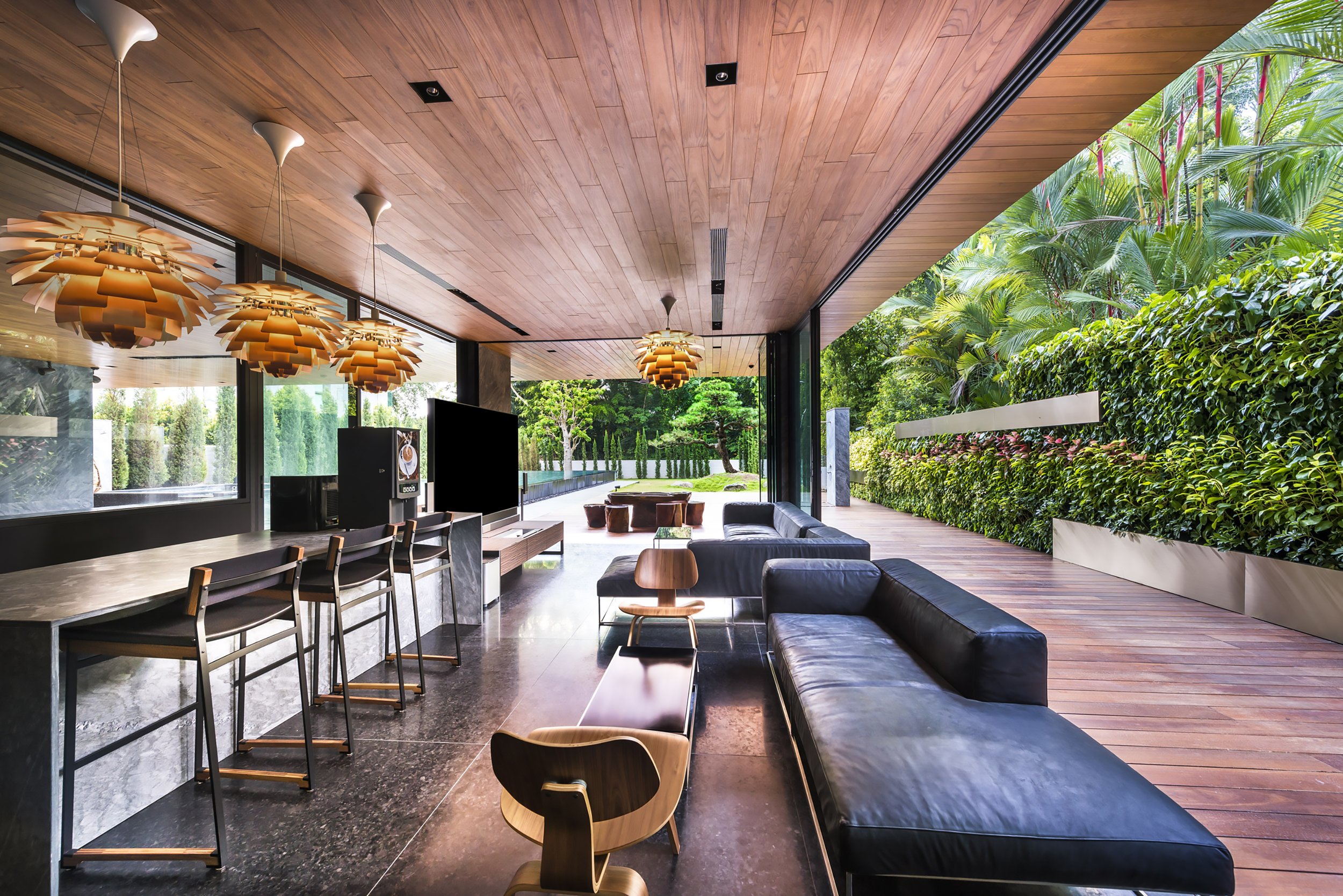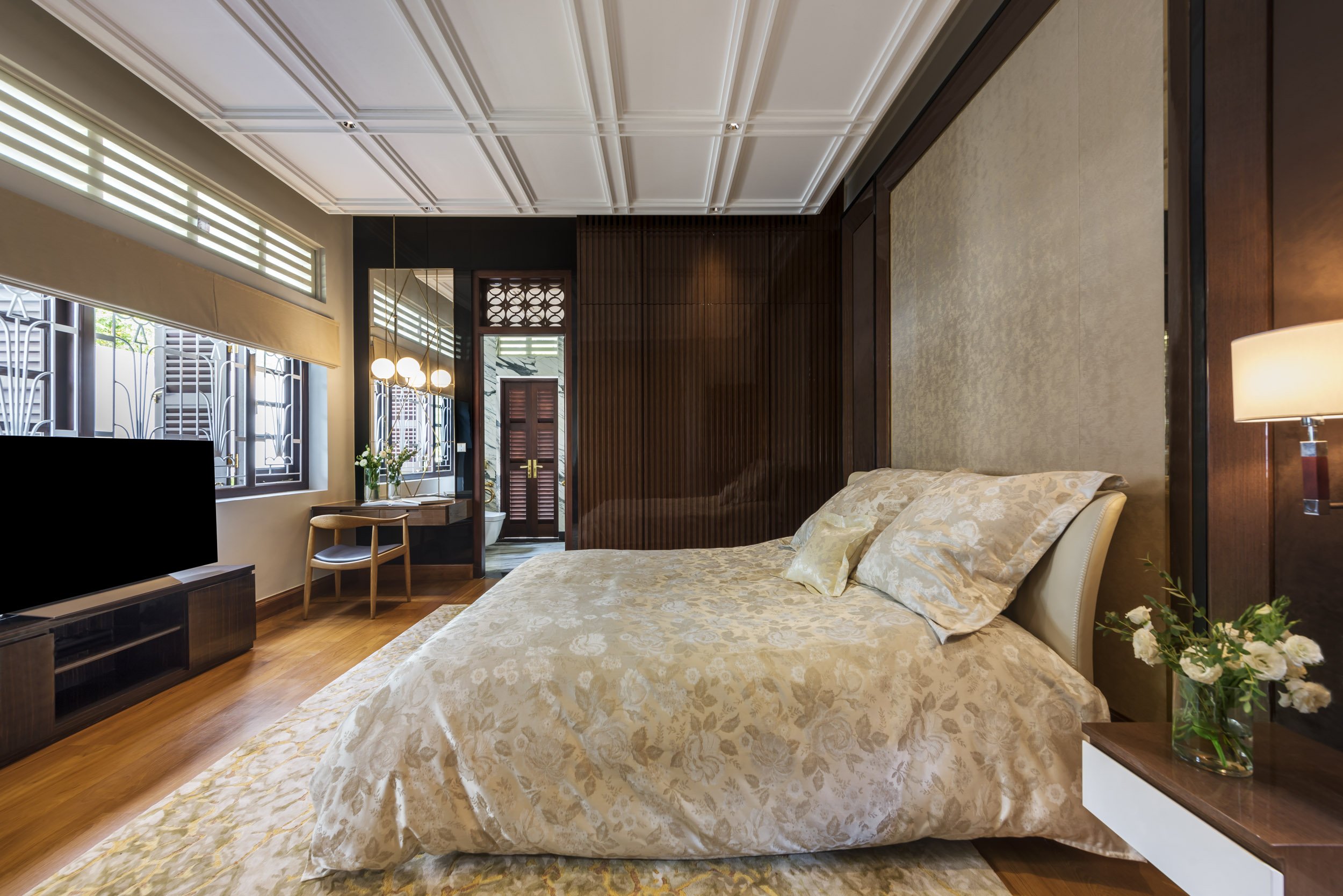HIDDEN HOUSE
COMPLETED
FUNCTION: Multi-Generation House (Landed, Detached)
SITE AREA: 3100 sqm
FLOOR AREA: 2500 sqm
LOCATION: SINGAPORE, Ridout Road
AWARDS: Golden Pin 2018 Design Mark Award-winning project
A small bricked, 2-storey conserved bungalow sits atop a 30-metre-wide by 100-metre-long slopping site. Elevated 12 meters high at the North, the 20th century Plantation Estate overlooks large terracing grass fields which terminates southwards into a luscious mixture of mature tropical trees such as Tembusu, Angsana, Ficus and Palms. Built as an accommodation for a British military officer and his family stationed on the island from the early 1920s, the bungalow and the site will now be home to a local multi-generation Chinese family. The owner intends to create an extension 12 times the size of the 200m2 bungalow to accommodate the diverse needs of his expanding family.
Any structure of such a scale will not only dwarf the conserved building but also compete architecturally and visually with it. More importantly, the relationship of the bungalow and its surrounding - the image of the plantation estate, will be lost.
The traditional Chinese quadrangle house type is used as an organizational principle for private quarters across these tiered platforms. On each level, taking the conserved building as the central unit, the respective family units are arranged to frame central gathering spaces for the family. This brought about a symmetry and hierarchy for the traditional Chinese family order and structure.
It is not uncommon for people to question the purpose or significance of things that are not readily visible or accessible. In this context, one may wonder about the reasons for a house that is hidden and cannot be seen. The curiosity can arise from a variety of factors, such as the mysterious nature of the house itself, the surrounding landscape, or the cultural and historical context of the area. The client has expressed that the architecture of the house reminds them of a Chinese idiom – nei you qian kun (内有乾坤) which implies there is more than meets the eye, more to be discovered.
The design aims to conserve not only the bungalow but the sense of place with two strategies - firstly, to compact all new structures to the north consequently leaving a large an open field towards the south. Secondly, to conceal the new structures under layers of terracing “Green Platforms” making the conserved bungalow the only expressive object within the new landscape, thereby preserving the view of grass fields bounded by the lush trees.
The primary entrance of the bungalow is disclosed by a sliding mechanism, which then reveals a curved and faceted expanse of verdant grass that envelops the preserved structure. These platforms of green roofs and timber cladded ceilings result in an interior of expansive ceiling-scape with deep and wide perspectives - a seemingly subterranean landscape.
A series of light wells puncture these platforms vertically forming the lift and spiral staircase shaft, the green courtyard and the pool atrium. At the lowest platform level, a 30-metre-long pool stretches out from the covered pool atrium into the open garden, providing a cooling effect to the interior space through convection. A feature staircase within this water court serves as a focal point in the high-volume space, designed to emit a radiant glow at night.
Between the platforms, vertical operable copper-cladded panels fill up the eastern and western façade providing shading and privacy to the interior spaces. The copper panels appear as unearthed metals while complementing the iron-rich pink bricks of the bungalow.
The green court located on the 1st storey, nestled between the conserved old house and the new bungalow, features a spacious lawn area that serves as and ideal space for outdoor activities. Additionally, situated adjacent to the living room of the new bungalow, the green court provides an abundance of natural light, thereby enhancing the overall ambiance of the interior space and surrounding.
The wood courtyard-like area located on the level below the green court serves as a transitional space that separates the living room and dining room of the new bungalow. It provides a semi-private area for family members to interact with each other. This courtyard, located adjacent to the garage or house, allows natural light and air to penetrate deep into the interior of the house, thereby enhancing the overall comfort and ambiance.
The client’s requirements for the house were twofold - to serve as a comfortable living space for the family, as well as to function as a venue for hosting business associates, extended family, and friends. Therefore, it was crucial to incorporate a range of amenities in the design of the house, including a movie theater, KTV room, swimming pool, sauna, fitness centre, squash court, wine cellar and a pool table – in order to ensure a continuous source of entertainment for guests.
The uniformity in the finishes utilized throughout the house beautifully blends the experience of various spaces together into a cohesive entity. The dining hall features a striking ocean-grey marble finish, complemented by the cool, book-matched Calacatta marble flooring beneath the feet, resulting in an exquisite aesthetic. The utilization of dark grey granite flooring creates a striking contrast against the warm, timbered ceilings.
While conservation guidelines mainly preserve the building, the project attempts to retain the typological essence of the Plantation Estate; one’s experience of the surrounding landscape from the conserved Bungalow.
Image Gallery
CREDITS
A collaboration project between PRODUCE and TA.LE ARCHITECTS
PHOTOGRAPHY: Edward Hendricks of CI&A Photography










































































